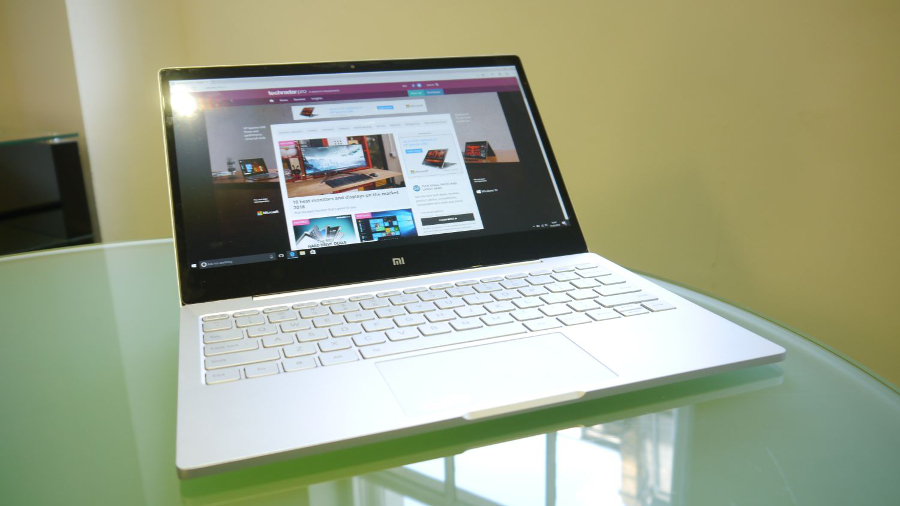
Introduction and design
Rumours about Xiaomi, the big Chinese smartphone vendor, launching a laptop have been going around for a few months already. Turns out that the company had not one, but two laptops in the pipeline.
Xiaomi is known for producing very nice looking smartphones for not a lot of money, the Mi5 being an excellent example of what the company can achieve, so anything emerging from its design team is likely to get heads turning.
And this was the case when the Xiaomi Air 12 and its bigger brother, the Xiaomi Air 13, were launched in August 2016. Both of them have an air of familiarity that can’t merely be coincidental.
Even the name alludes to another laptop produced by a firm based in Cupertino, California – the MacBook Air is the model we’re referring to and there are a lot of similarities here as we’ll find out.

Note that the Xiaomi Air 12 was sent to us by Gearbest and costs £471 ($590 for the US, which is around AU$780) at the time of writing. Because it caters for a Chinese audience only, everything is Chinese-focused including the plug and the accompanying literature.
It’s worth noting as well that the laptop currently comes with Windows 10 Home Edition (Chinese version) – Gearbest optionally offers a trial version (non-activated) Windows 10 HE allowing you to buy a license. This isn’t ideal as it adds to the cost of the machine.
Also if you’re thinking of a purchase, we strongly advise you to read our article on the pros and cons of buying from Chinese retailers (and generally speaking, outside of the UK).
Design
Before you even see the laptop, one thing you cannot help notice is the box. As a reviewer, we’re used to laptops coming in BBBs (boring brown boxes).
This one is different, on par with far more expensive, premium laptops that try to differentiate themselves from cheaper alternatives by making an impression before the product is actually unboxed.

The next thing you’ll notice is that the box contains a charger, an envelope and a laptop; nothing else. The 45W white charger is very much MacBook-esque with the plug and the power supply unit integrated as one.
That’s all good and well, but just bear in mind that you will need clearance around the power socket as the charger is a tad bulky. And you will need an adaptor to use it outside China. The cable, which is a USB Type-C affair, is about 150cm long, another point to bear in mind.
As for the Xiaomi Air 12 itself, the laptop looks like a metallic roof tile, almost uniform in thickness and, surprise, surprise, devoid of any logo or logotype on the cover.
At 292 x 202 x 12.9mm, it is smaller than an A4 sheet and its thickness is reasonable for a device of this size. Its weight – 1.08kg – puts it bang in between Apple’s MacBook and the Dell XPS 13.
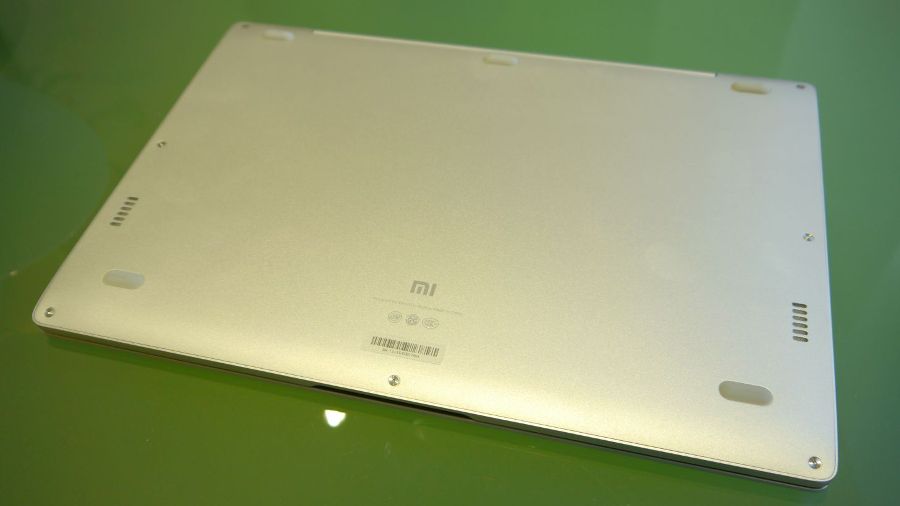
Rather than drawing from the MacBook Air or the MacBook, Xiaomi seems to have sought inspiration from the MacBook Pro. The machine has a similar black bezel and an almost constant thickness – there’s no wedge here.
You’ll also notice the same brushed aluminium finish, the same chamfered cut in front and that single, long hinge which connects the base to the screen.
The keyboard – which is backlit – has a shorter travel compared to the MacBook Pro, and is on par with the Dell XPS 13 with rather mushy feedback. There’s a bit of flex when touch typing but nothing deal-breaking.
Surprisingly, the letter keys on the Xiaomi Air 12 are actually bigger than on the MacBook Pro (16mm compared to 15mm). Note that the power button is located on the right-hand top corner of the laptop which can cause some issues since it is located near the delete button.

The touchpad’s dimensions (103 x 62mm) make it just a tad smaller than the XPS 13. As expected, there are no physical buttons and its surface is as smooth as that of the aforementioned Dell laptop.
Flip the laptop over to expose the belly of the beast: there are five grey rubber feet, two speaker vents and a sticker that can be peeled away. The bottom cover is secured using eight screws, one of which is hidden – compared to some of its competitors, the Xiaomi Air 12 is particularly upgrade-friendly.
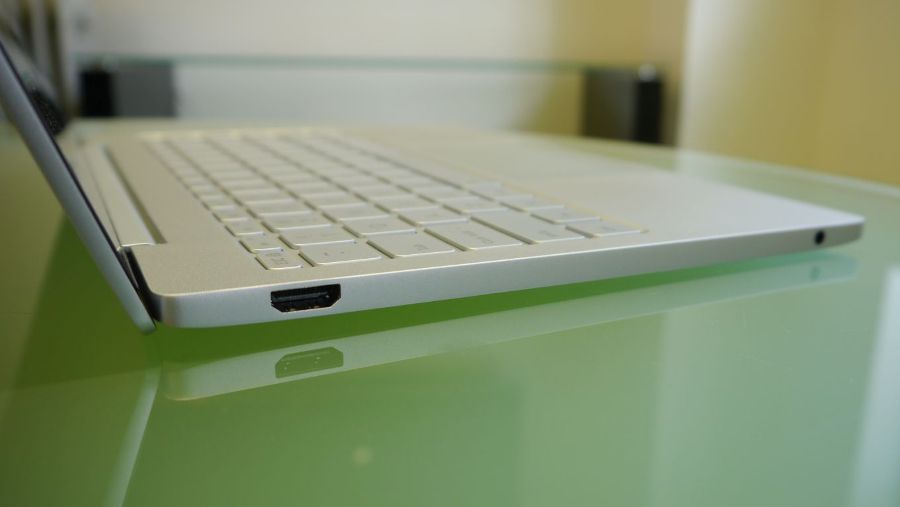
As for connectors, there’s a grand total of four: one HDMI port, one full-sized USB 3.0, a USB Type-C port which doubles as the power connection and an audio jack. This is better than the Apple MacBook but falls short of the XPS 13 which has an extra USB port plus a card reader (yes, there’s no card reader here).
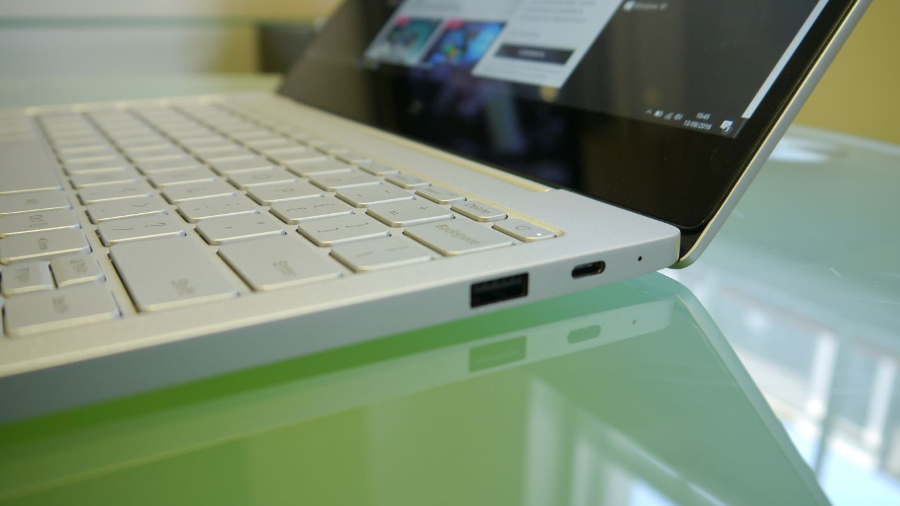
Once you open it up, perhaps the most distinctive part of the Xiaomi Air is the screen. It has edge-to-edge glass covering most of it, which scores a 7 on the Mohs hardness scale. In comparison, the popular Gorilla Glass 3 scores 6.8.
Sadly, the Air 12 is not touchscreen-enabled – adding the glass may therefore be confusing and introduces a significant amount of glare for no reason, and that’s despite being fully laminated. Sure, it looks great but expect a few customers to be befuddled by the lack of response when they try to touch the screen.
Specifications and performance
Spec sheet
Here is the configuration for the Xiaomi Air 12 Techradar Pro reviewed:
- CPU: Intel Core m3-6Y30 (900MHz, turbo to 2.2GHz)
- Graphics: Intel HD Graphics 515
- RAM: 4GB
- Screen: 12.5-inch, full HD 1920 x 1080 resolution display
- Storage: 128GB SATA3 M2 SSD
- Ports: 1 x USB 3.0, 1 x USB Type-C, HDMI, audio jack
- Connectivity: 802.11ac Wi-Fi, Bluetooth 4.1
- Cameras: 1MP front-facing
- Weight: 1.08kg
- Size: 292 x 202 x 12.9mm
Xiaomi opted for an Intel Core M processor to power the Air 12 – this is a Skylake-based m3-6Y30 CPU, a model launched a year ago that features two cores, four threads, a base processor frequency of 900MHz and a maximum turbo frequency of 2.2GHz.
With 4MB cache, it offers a TDP of only 4.5W. Its Intel HD Graphics 515 integrated GPU has a base frequency of 300MHz and a maximum dynamic frequency of 850MHz. Compared to the previous generation, this one finally supports 4K at 60Hz via DisplayPort.
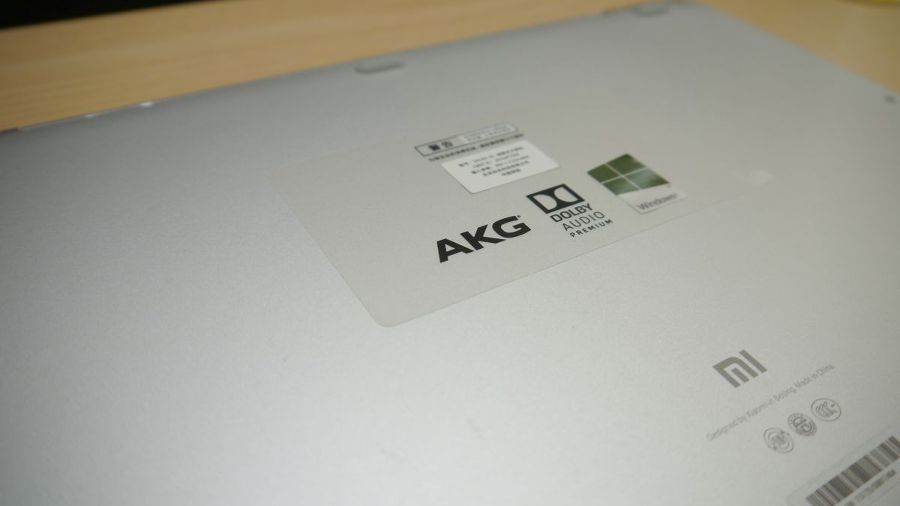
That said, the Core m5-6Y57 might have been a better option: it costs the same and has the same TDP but a higher base frequency, turbo frequency and maximum dynamic frequency, and above all that, supports Intel’s vPro technology.
The display used is a 12.5-inch affair with a full HD resolution. 4GB of DDR3 RAM is soldered on the motherboard and sadly there is no option to increase that.
A 128GB SATA3 M2 SSD from Samsung occupies one slot with another free PCIe M2 slot available next to it. Both can be accessed simply by removing the cover, a fairly easy task.
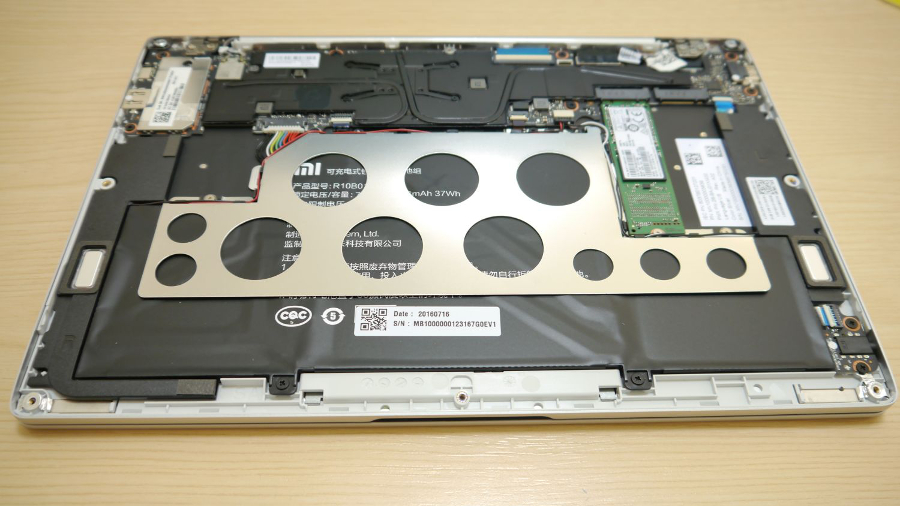
The battery is a non-replaceable 37Whr model, one which according to Xiaomi should power the laptop for up to a whopping 11.5 hours, but in reality, that can only be achieved under extreme, unrealistic circumstances (no connectivity, lowest brightness setting).
The rest of the specification is fairly standard for a laptop of this price: 802.11ac Wi-Fi, a 1-megapixel front-facing camera, Bluetooth 4.1 and a pair of AKG custom dual speakers.
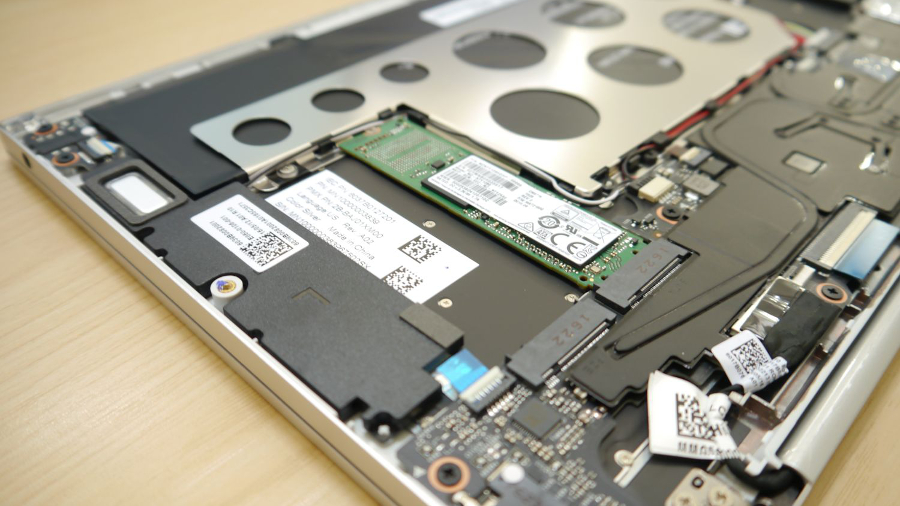
Benchmarks
The Xiaomi Air 12 delivered some solid numbers thanks to a smart combination of components. While none of them are particularly eye-catching, they are on par with the rest of the competition. The Asus Zenbook UX305 scored 212 points on Cinebench for example while the M5-based Dell XPS 12 achieved 180 points.
The below table shows how Xiaomi’s first laptop performed – note that most scores are within error margins except for the Passmark and the Cinebench ones. The latter is particularly intriguing as the Air 12 scored consistently better on battery than on mains.
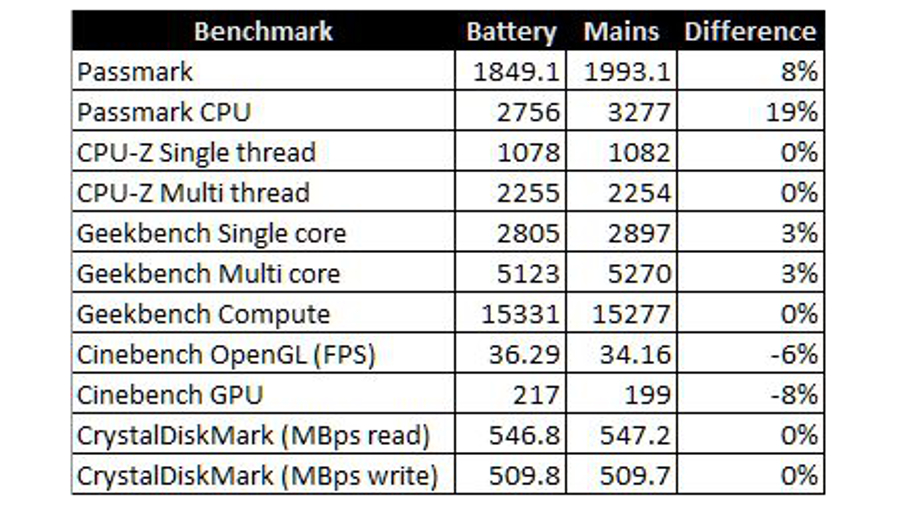
We were expecting worse audio from this laptop. The fact that the speaker grilles were located on the laptop base didn’t bode well, but the slight elevation procured by the rubber feet together with an ever-so-slight curvature meant that the sound was honestly decent rather than outright bad.
With a 12.5-inch diagonal (156 x 277mm) and a full HD resolution, the Xiaomi Air 12 has a higher pixel density than most laptops on the market which makes text and icons particularly crisp.
They need to be upscaled though as otherwise they will look uncomfortably small. Brightness and contrast were superb, subjectively on par with the Dell XPS 13 although the latter doesn’t have a glossy glass overlay.

We tested the Xiaomi’s battery life by playing a YouTube countdown timer with the screen’s brightness set to full. To mimic real-life experience, we left all other settings untouched which meant that the battery saver feature kicked in when battery life hit 20%.
It dropped to 10% after 6 hours 29 minutes, before the laptop shut down at 5% which happened just after the 7 hour mark. Charging it back to 68% took around 51 minutes which is reasonably fast. So don’t expect the rated 11.5 hours battery life in real-life unless you’re ready to go to extremes to achieve it.
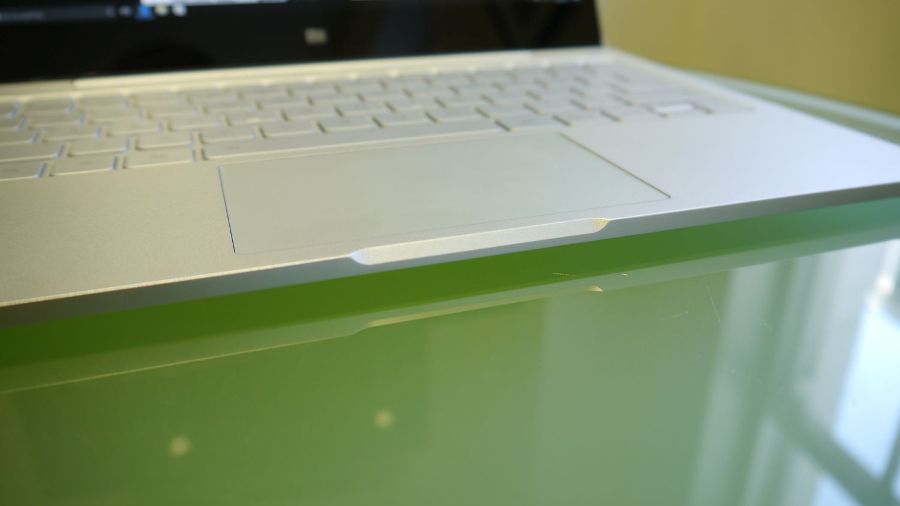
The competition
There’s plenty of competition based on the same Intel Core m3-6Y30 processor and they are all thin-and-light laptops.
Perhaps the most compelling of them is the Lenovo Yoga 700 (review here) which is the smallest member of the Yoga family and sports a smaller SSD compared to the Xiaomi Air 12, but twice the RAM.
It also costs far less (under £420 – that’s around $555, AU$740), has a touchscreen display, is entirely convertible and can be with you in less than a day (plus it is sold by Amazon).
If you can put up with the orange colour scheme, then the Yoga 700 is probably an altogether better alternative to the Xiaomi Air 12.
Other rivals include the Asus Zenbook UX305CA, Dell Latitude 5175, the Samsung Galaxy TabPro S, the HP Elite x2 1012 G1 and the Dell XPS 12-9250. All bar the first one are 2-in-1 convertibles or detachables.
Verdict
The Air 2 laptop is a very decent first effort from Xiaomi but unfortunately the competition is absolutely cutthroat even at this price range. It has a great MacBook-inspired design, decent performance and battery life, but suffers from a couple of flaws that dampen its appeal.
We liked
There’s a lot to love about the Xiaomi Air 2, like the all-metal chassis with a keyboard featuring large keys, and a charger that integrates the plug. Xiaomi’s decision to offer an extra expansion slot and to allow for easy access is also laudable.
We disliked
The absence of a card reader puzzles us (although on the other hand, docking stations can be used to remedy the situation) and the use of edge-to-edge glass, while aesthetically pleasing, is likely to lose its appeal within a few weeks.
Final verdict
The Xiaomi Air 2 is a great little laptop that’s let down by some design and hardware choices – for example, a beefier processor could have been chosen for the same outlay and a DisplayPort connector would have been nice.
Then there’s the fact that there are other alternative devices that are either cheaper (Lenovo Yoga 700) with more flexibility, more system memory, and better connectivity. Most importantly, they are all available for sale in the UK which makes aftersales support far, far easier.
Source: techradar.com





































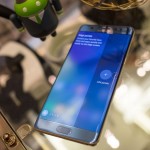




One thing i dislike is how it has a US keyboard layout :/ meaning that UK buyers like myself are kind of in the shit. or we just need to learn the American keybaord
The #1 thing I like about this device is no branding on it. Slapping a glowing fruit or putting Dell or HP on the devices is just tacky.